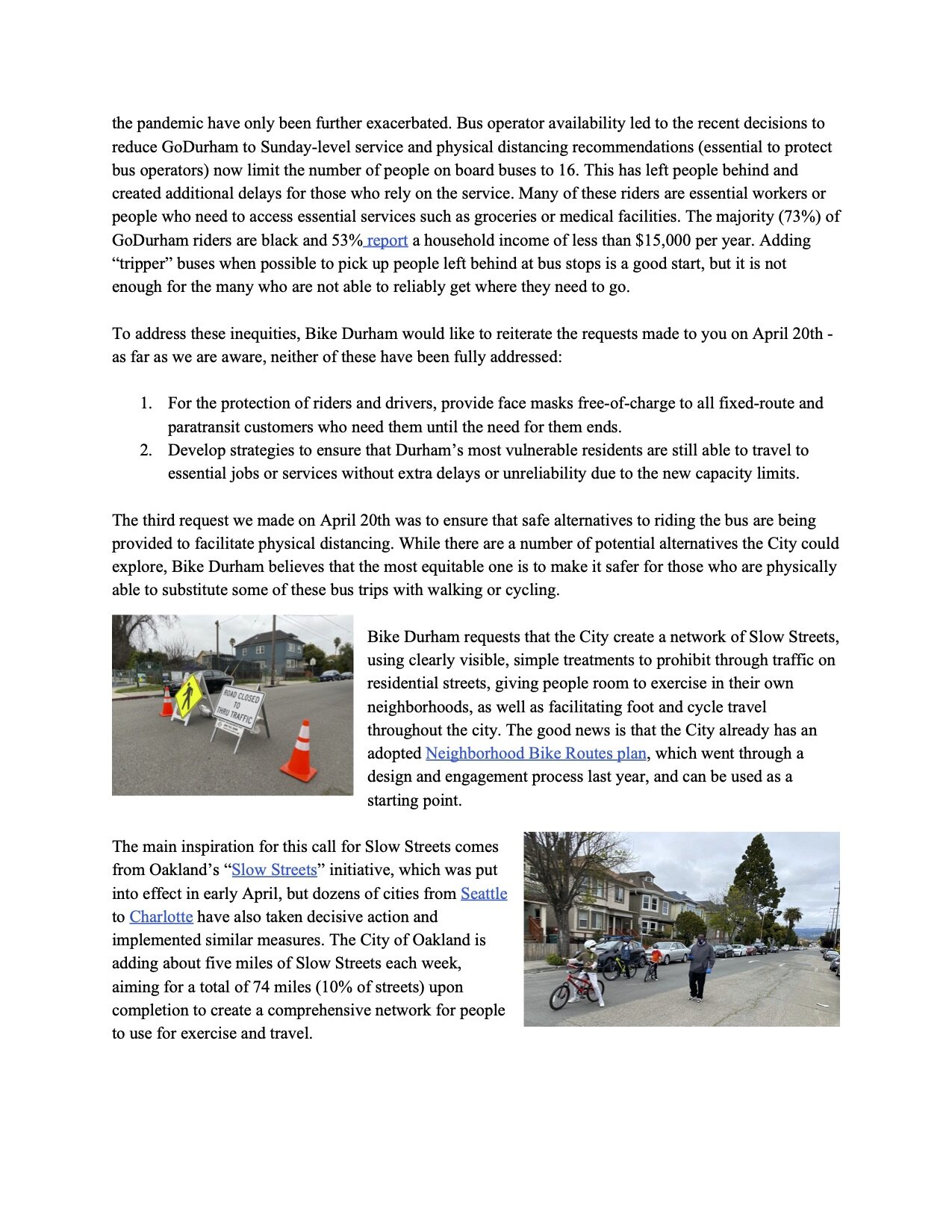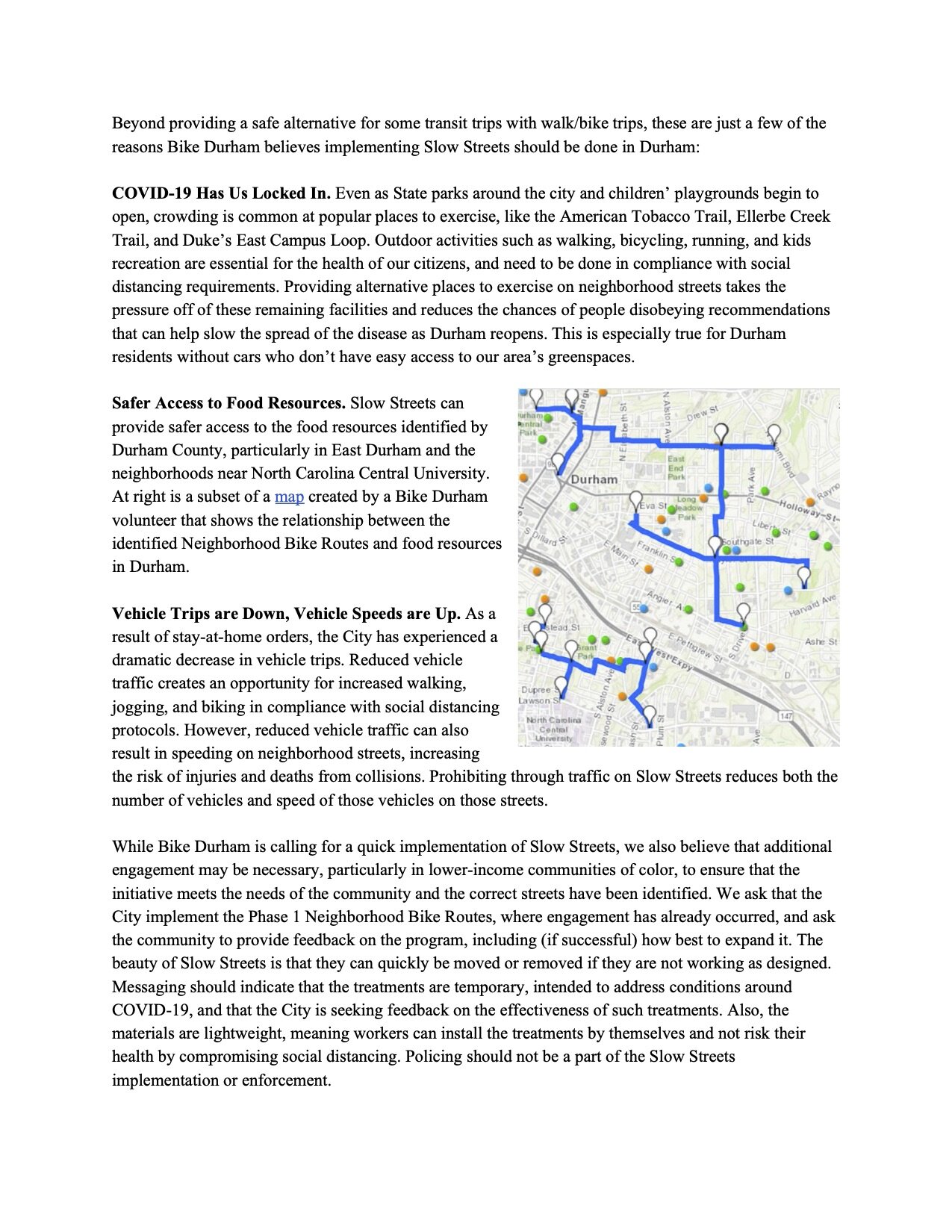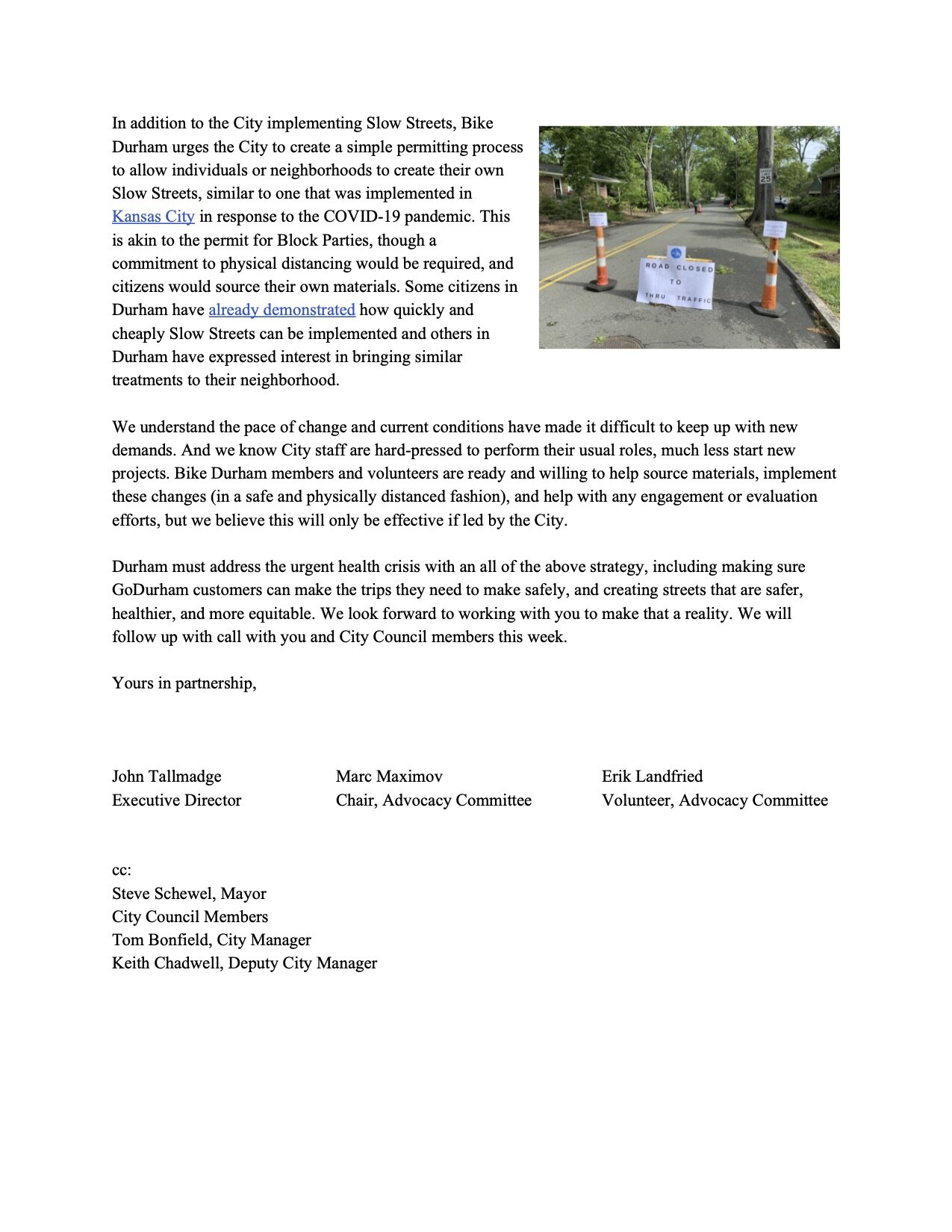The City’s vitally important stay-at-home measures have changed the way Durhamites are using our streets. In a letter to transportation director Sean Egan, Bike Durham called upon City staff to address these changing circumstances with concrete action.
Here are the main points of the letter, in brief:
While the governor has begun the slow process of re-opening the economy of North Carolina, evidence suggests that the effects of the stay-at-home orders and physical distancing recommendations will continue to change the way people get around Durham in a profound way. Bike Durham believes there is an urgent need to do more to address the inequitable impacts of this change. This need will only continue to grow as the economy opens back up and more people need to travel around Durham.
For many Durhamites, the current crisis has created new transportation challenges (this is to say nothing of the overall impact of COVID-19 which we know disproportionately impacts people of color and those with lower incomes). The inequities that existed in Durham’s transportation system prior to the onset of the pandemic have only been further exacerbated. Bus operator availability led to the recent decisions to reduce GoDurham to Sunday-level service and physical distancing recommendations (essential to protect bus operators) now limit the number of people on board buses to 16. This has left people behind and created additional delays for those who rely on the service.
To address these inequities and facilitate safe physical distancing on Durham's streets, Bike Durham has requested that the City, with assistance from Bike Durham members and volunteers, do the following things:
For the protection of riders and drivers, provide face masks free-of-charge to all fixed-route and paratransit customers who need them until the need for them ends.
Develop strategies to ensure that Durham’s most vulnerable residents are still able to travel to essential jobs or services without extra delays or unreliability due to the new capacity limits on GoDurham buses.
Create a network of Slow Streets, using clearly visible, simple treatments to prohibit through traffic on residential streets, giving people room to exercise in their own neighborhoods, as well as facilitating foot and cycle travel throughout the city based on the City's adopted Neighborhood Bike Routes plan. The main inspiration for this call for comes from Oakland’s “Slow Streets” initiative.
Create a simple permitting process to allow individuals or neighborhoods to create their own Slow Streets, similar to one that was implemented in Kansas City in response to the COVID-19 pandemic.
The full text of the letter is below.





